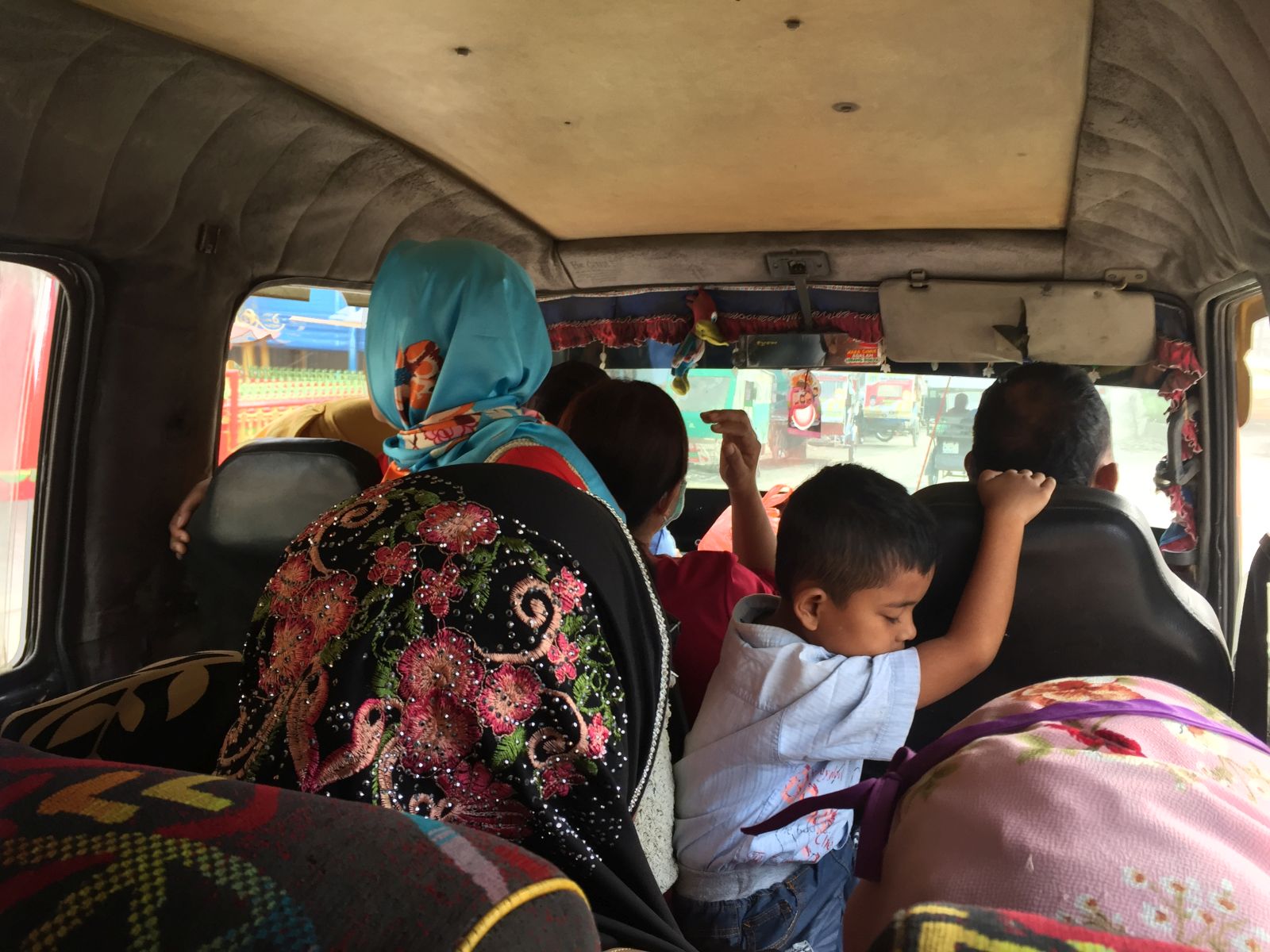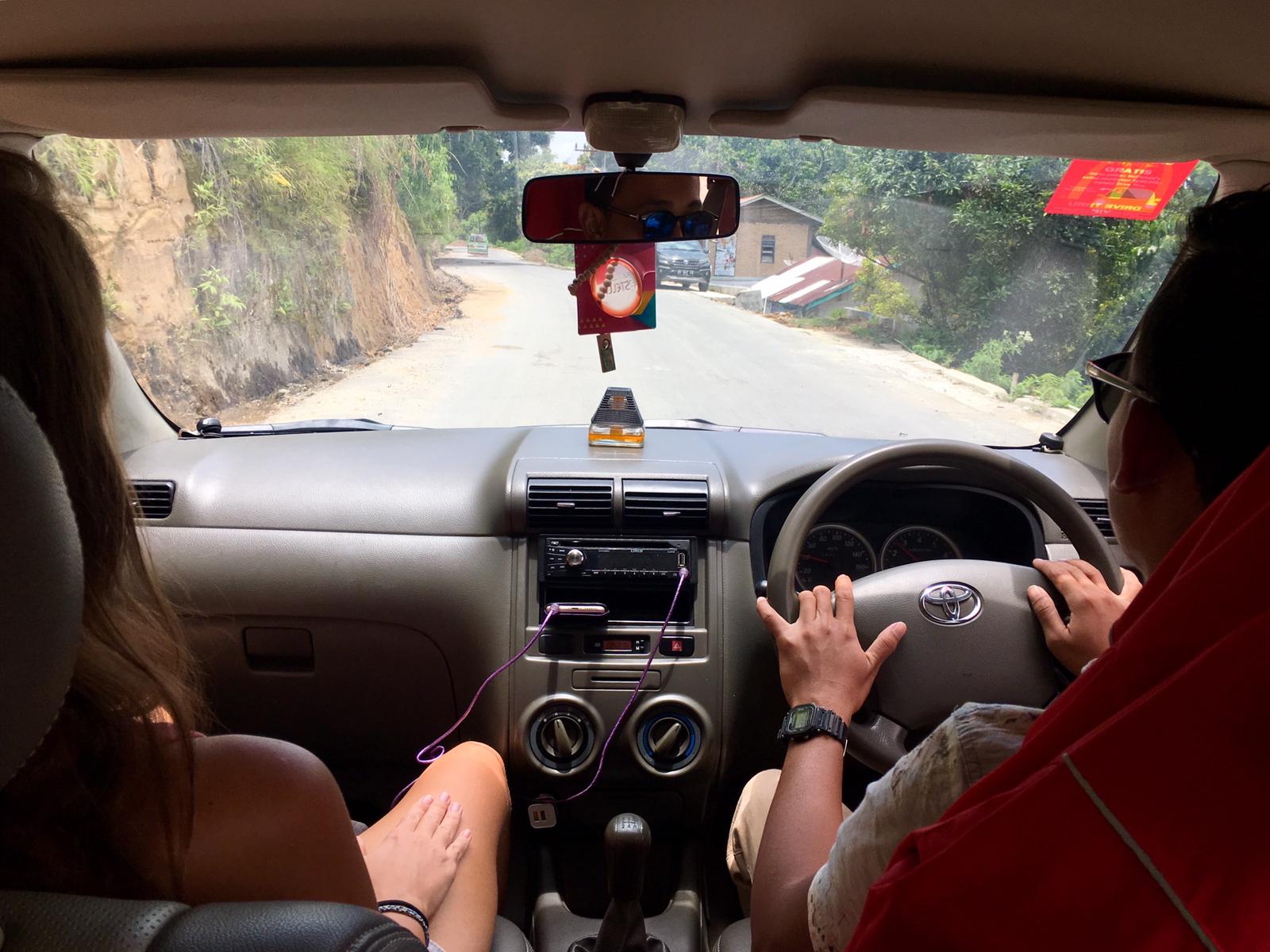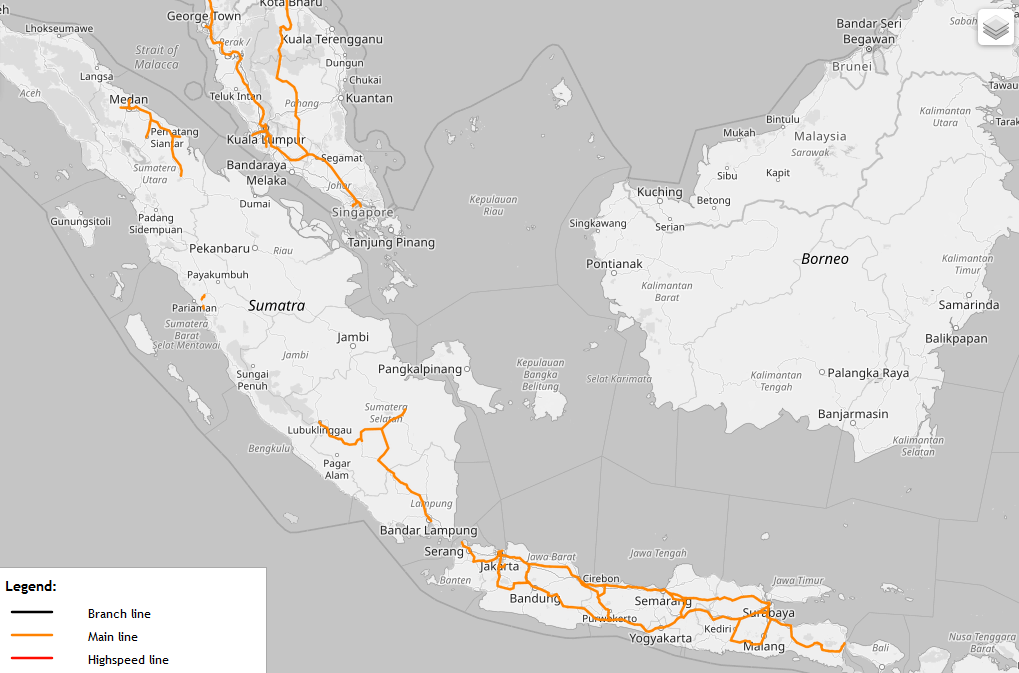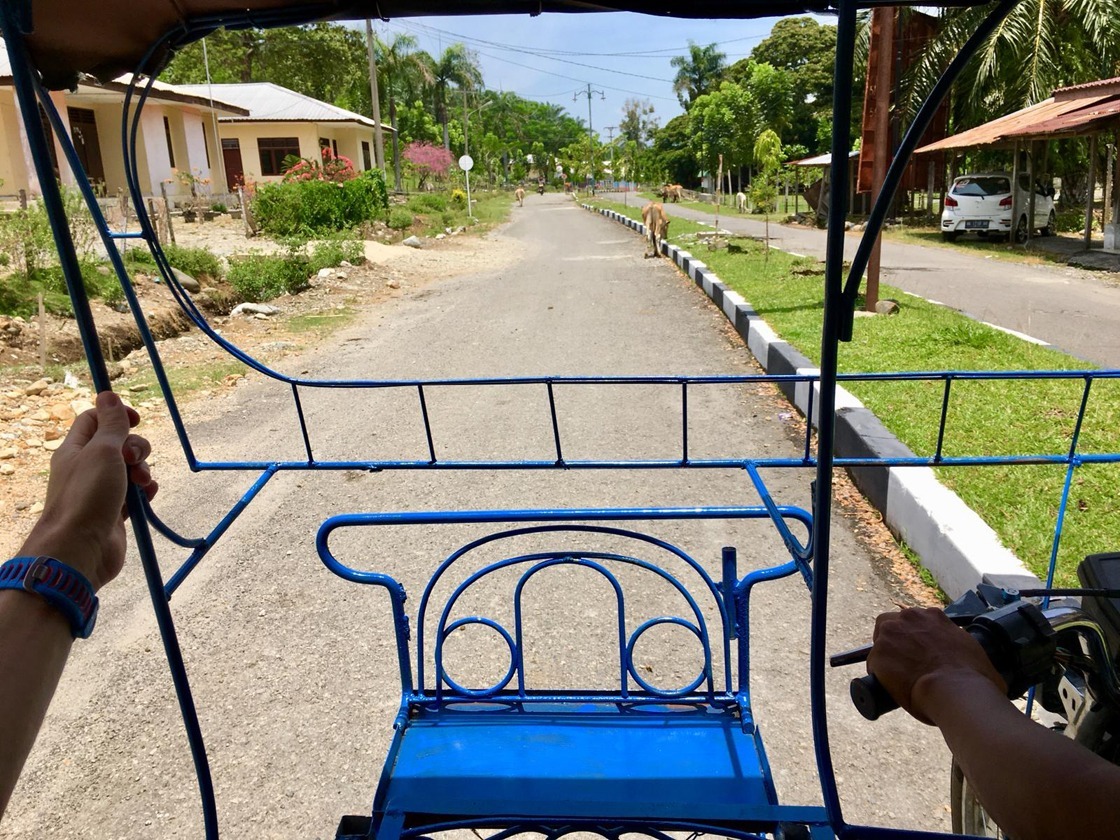Fully booked for package tours in August. Jungle trekking is still possible!
Overview
Are you planning a trip to Sumatra? Once you start researching about Indonesia’s largest island, you’ll probably find stories of people who got ripped off at Pinang Baris bus station in Medan or stories of crazy minibuses with no legroom and smoking inmates. And yes, these stories are true.
We want to clear up some of the myths and give tips on how to travel around Sumatra. Christine has solo traveled through Sumatra many times, and Syafri was born and raised in Bukit Lawang. So the information collected is mostly first-hand experience.
Be patient
If you are planning your trip to Sumatra, don’t be fooled by the size of the island and the Google Maps route planners. Sumatra is huge and the wheels sometimes turn slowly. Transport on Sumatra is an adventure in itself. The roads are bad and even short distances take forever.
Here is a comparison for travel times:
| Route | Google Maps | Realistic Times |
| Medan – Bukit Lawang | 2.5h | 4h |
| Bukit Lawang – Berastagi | 4h | 5-6h |
| Bukit Lawang – Lake Toba | 6h | 7-8h |
| Medan – Lake Toba | 3.5h | 5h |
Breaks, traffic jams and unforeseen events are not included.
Therefore our tip: Take it easy on your trip to Sumatra. Just like the locals under the motto “Pelan Pelan” (slowly slowly). Do not pack too many destinations into your vacation, otherwise you sit in buses or airplanes most of the time.
Getting around Sumatra – These are the modes of transport

Local Busses
A well functioning bus system like in Thailand or Malaysia does not exist here. There are local buses, but proper timetables are rare. Booking bus tickets online is not possible. If you want to travel with local buses, it is best to ask in your accommodation. But basically, one gets from every touristic place onwards by bus. Sometimes it is necessary to change buses a few times. But this transport option is only recommended for adventurous travellers.
For longer distances there are big coaches like Damri or ALS serving long distances on Sumatra, e.g. the night bus from Medan to Banda Aceh or Lake Toba to Padang. Here it is often recommended to pack warm clothes. The air conditioning is mostly running at full speed.
It is hard to find schedules and prices online, so it is best you ask your accommodation.
Local minibuses are very cheap, but far from comfortable. There is no air conditioning and hardly any legroom. You sit close to others. Many people do not speak English, smoking is common. It happens that tourists in Medan are often being ripped off when it comes to price negotiations. Our tip: Tell them you have already been to Sumatra and know the prices.
If all this sounds too adventurous to you, here is the good news: There are also cheap alternative means of transport to travel around Sumatra.
Tourist Busses
These are mostly shared cars or vans that connect many tourist destinations with each other. There are usually fixed departure times between one and several times a day. You can book these through your accommodation.
Here are some prices:
| Banda Aceh – Bukit Lawang | 425,000 IDR |
| Berastagi – Bukit Lawang | 230,000 IDR |
| Ketambe – Bukit Lawang | 425,000 IDR |
| Lake Toba – Bukit Lawang | 270,000 IDR |
| Medan Flughafen – Bukit Lawang | 210,000 IDR |
| Medan Stadt – Bukit Lawang | 150,000 IDR |
Subject to change.
Private Driver
What sounds like a luxury holiday is actually very affordable when getting around Sumatra. Especially if you travel as a couple, in a group or with family, a pivater driver can be very affordable. With a private driver you are more independent and have the possibility to get to know the secret spots of Sumatra, where you can’t get to with public buses. The price starts at 700,000 IDR/day for the pick up from the airport and transport to Bukit Lawang. Including car with air conditioning, driver and petrol.

Train
There’s a fine little train system on Sumatra. So you can go from Medan to Binjai or from Medan to Tanjung Balai (ferry to Malaysia); there are also some train routes around Padang and in the south near Palembang. Tickets and timetables can be viewed online at https://kai.id
Rumour has it that the existing network will be extended and new railway lines will be added to Sumatra. For example, the Trans Sumatra railway project, which is supposed to run the entire length of the island. The northern end of the line, which will connect Banda Aceh and Medan, is said to be completed by the end of 2019. There will be a line Medan – Parapat and further south Palembang-Betung-Jambi-Pekanbaru.

Ferry
Airplane
Flying is the most comfortable way to travel long distances on Sumatra. Medan is the main hub for flights onto the island of Sumatra. In addition, many large cities such as Banda Aceh in the north or Padang in the west have airports with connections between each other. Travelers wishing to explore the islands of Nias or Mentawais on the west coast of Sumatra should fly to Padang (PDG). If you want to go north, you can fly from Medan to Banda Aceh. The airport there is called Sultan Iskandar Muda International Airport (BTJ).
For domestic flights it is best to check tiket.com for connections and bookings.
Rental car/scooter
We expressly do not recommend renting a car. We only recommend a scooter for sightseeing on site (e.g. at lake Toba or on Pulau Weh), but rather not for getting from A to B. The traffic is crazy and the roads are bad.
Becak
Becaks (tuktuks) are an easy way to get around on the spot. You should definitely take a Becak ride to get an impression of the real Sumatra culture. But be sure to negotiate the price beforehand.
We hope the information on how to travel around Sumatra has helped you. If you have any questions, please do not hesitate to contact us.
Angkot (shared bus)
Angkutan Kota (lit. ’city transport’), abbreviated as angkot, are share taxis widely operating throughout Sumatra usually with microbuses. There are also different names: In Medan it is called “sudako”, in Aceh it is called “labi-labi”.
Angkot run according to their exact routes and may stop at any class of bus stations. Additionally, passengers can stop the van anywhere according to its destination, and is not required to stop at a bus stop.

bookings
For questions and bookings please contact us
We started as a tour operator not only because we love the island and the nature, but also to connect and help the locals. We work with a selected bunch of locals for trekking, transport an guiding and also help local NGOs. More about us
Contact Info
For questions and booking please contact us.
This website contains affiliate links.
Imprint | Data Privacy | Terms

